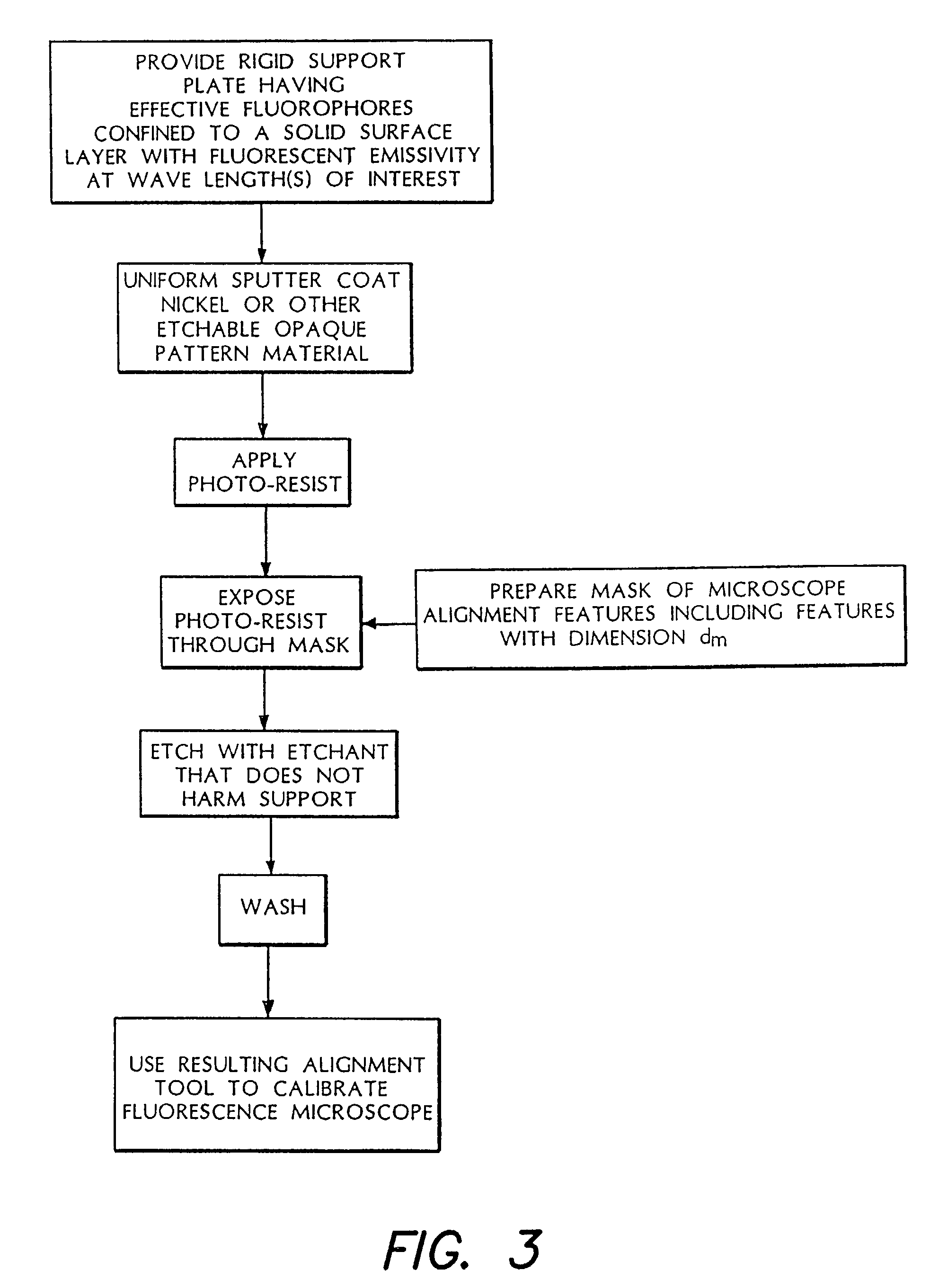Quantified fluorescence microscopy
a fluorescence microscopy and quantitative technology, applied in the field of microscopy, can solve the problems of difficult comparison, increased difficulty in comparing, and different fluorescence microscopy of specimens, and achieve the effect of stable fluorescence material and fine features
- Summary
- Abstract
- Description
- Claims
- Application Information
AI Technical Summary
Benefits of technology
Problems solved by technology
Method used
Image
Examples
Embodiment Construction
[0052]Referring to FIGS. 1 and 2, the alignment tool 2a comprises a generally planar rigid member carrying on its face a detailed pattern of optical features suitable for calibration of the instrument. The rigid member is typically of the same dimensions as the microscope slide, microarray chip or other object to be examined, to fit in the same position on the instrument. The optical features of the alignment tool include lines and circular dots of various dimensions to emulate the various sizes of dots and linear features of biological or other material to be examined. The finest features have dimensions of the order of 1 micron or less to suitably calibrate for detection of features of a few micron dimensions or less.
[0053]The calibration tool shown in FIGS. 1 and 2 includes regions T-1, T-2, T-3, T-4, and T-5. Region T-1 includes a set of “barcode” lines having thickness 2 micron, 4 micron, 6 micron, 8 micron, 10 micron, and 12 micron, separated by twice their size. Region T-2 in...
PUM
| Property | Measurement | Unit |
|---|---|---|
| thickness | aaaaa | aaaaa |
| thickness | aaaaa | aaaaa |
| thickness | aaaaa | aaaaa |
Abstract
Description
Claims
Application Information
 Login to View More
Login to View More - R&D
- Intellectual Property
- Life Sciences
- Materials
- Tech Scout
- Unparalleled Data Quality
- Higher Quality Content
- 60% Fewer Hallucinations
Browse by: Latest US Patents, China's latest patents, Technical Efficacy Thesaurus, Application Domain, Technology Topic, Popular Technical Reports.
© 2025 PatSnap. All rights reserved.Legal|Privacy policy|Modern Slavery Act Transparency Statement|Sitemap|About US| Contact US: help@patsnap.com



